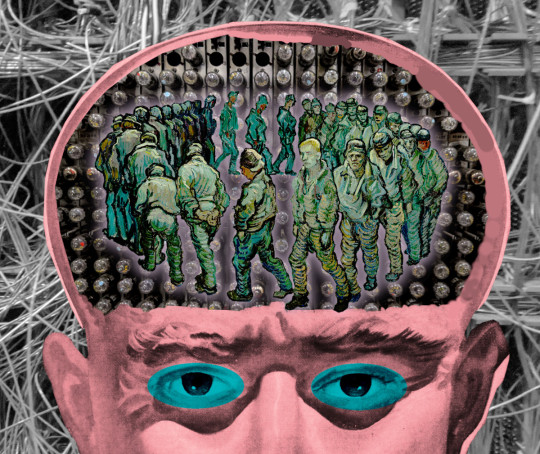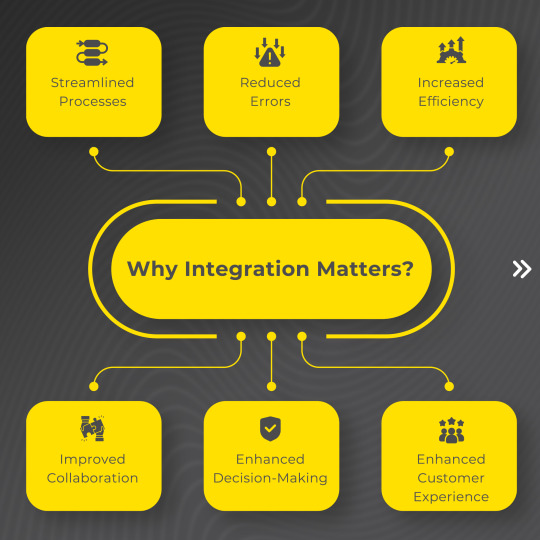#clm
Text
Three AI insights for hard-charging, future-oriented smartypantses

MERE HOURS REMAIN for the Kickstarter for the audiobook for The Bezzle, the sequel to Red Team Blues, narrated by @wilwheaton! You can pre-order the audiobook and ebook, DRM free, as well as the hardcover, signed or unsigned. There’s also bundles with Red Team Blues in ebook, audio or paperback.

Living in the age of AI hype makes demands on all of us to come up with smartypants prognostications about how AI is about to change everything forever, and wow, it's pretty amazing, huh?
AI pitchmen don't make it easy. They like to pile on the cognitive dissonance and demand that we all somehow resolve it. This is a thing cult leaders do, too – tell blatant and obvious lies to their followers. When a cult follower repeats the lie to others, they are demonstrating their loyalty, both to the leader and to themselves.
Over and over, the claims of AI pitchmen turn out to be blatant lies. This has been the case since at least the age of the Mechanical Turk, the 18th chess-playing automaton that was actually just a chess player crammed into the base of an elaborate puppet that was exhibited as an autonomous, intelligent robot.
The most prominent Mechanical Turk huckster is Elon Musk, who habitually, blatantly and repeatedly lies about AI. He's been promising "full self driving" Telsas in "one to two years" for more than a decade. Periodically, he'll "demonstrate" a car that's in full-self driving mode – which then turns out to be canned, recorded demo:
https://www.reuters.com/technology/tesla-video-promoting-self-driving-was-staged-engineer-testifies-2023-01-17/
Musk even trotted an autonomous, humanoid robot on-stage at an investor presentation, failing to mention that this mechanical marvel was just a person in a robot suit:
https://www.siliconrepublic.com/machines/elon-musk-tesla-robot-optimus-ai
Now, Musk has announced that his junk-science neural interface company, Neuralink, has made the leap to implanting neural interface chips in a human brain. As Joan Westenberg writes, the press have repeated this claim as presumptively true, despite its wild implausibility:
https://joanwestenberg.com/blog/elon-musk-lies
Neuralink, after all, is a company notorious for mutilating primates in pursuit of showy, meaningless demos:
https://www.wired.com/story/elon-musk-pcrm-neuralink-monkey-deaths/
I'm perfectly willing to believe that Musk would risk someone else's life to help him with this nonsense, because he doesn't see other people as real and deserving of compassion or empathy. But he's also profoundly lazy and is accustomed to a world that unquestioningly swallows his most outlandish pronouncements, so Occam's Razor dictates that the most likely explanation here is that he just made it up.
The odds that there's a human being beta-testing Musk's neural interface with the only brain they will ever have aren't zero. But I give it the same odds as the Raelians' claim to have cloned a human being:
https://edition.cnn.com/2003/ALLPOLITICS/01/03/cf.opinion.rael/
The human-in-a-robot-suit gambit is everywhere in AI hype. Cruise, GM's disgraced "robot taxi" company, had 1.5 remote operators for every one of the cars on the road. They used AI to replace a single, low-waged driver with 1.5 high-waged, specialized technicians. Truly, it was a marvel.
Globalization is key to maintaining the guy-in-a-robot-suit phenomenon. Globalization gives AI pitchmen access to millions of low-waged workers who can pretend to be software programs, allowing us to pretend to have transcended the capitalism's exploitation trap. This is also a very old pattern – just a couple decades after the Mechanical Turk toured Europe, Thomas Jefferson returned from the continent with the dumbwaiter. Jefferson refined and installed these marvels, announcing to his dinner guests that they allowed him to replace his "servants" (that is, his slaves). Dumbwaiters don't replace slaves, of course – they just keep them out of sight:
https://www.stuartmcmillen.com/blog/behind-the-dumbwaiter/
So much AI turns out to be low-waged people in a call center in the Global South pretending to be robots that Indian techies have a joke about it: "AI stands for 'absent Indian'":
https://pluralistic.net/2024/01/29/pay-no-attention/#to-the-little-man-behind-the-curtain
A reader wrote to me this week. They're a multi-decade veteran of Amazon who had a fascinating tale about the launch of Amazon Go, the "fully automated" Amazon retail outlets that let you wander around, pick up goods and walk out again, while AI-enabled cameras totted up the goods in your basket and charged your card for them.
According to this reader, the AI cameras didn't work any better than Tesla's full-self driving mode, and had to be backstopped by a minimum of three camera operators in an Indian call center, "so that there could be a quorum system for deciding on a customer's activity – three autopilots good, two autopilots bad."
Amazon got a ton of press from the launch of the Amazon Go stores. A lot of it was very favorable, of course: Mister Market is insatiably horny for firing human beings and replacing them with robots, so any announcement that you've got a human-replacing robot is a surefire way to make Line Go Up. But there was also plenty of critical press about this – pieces that took Amazon to task for replacing human beings with robots.
What was missing from the criticism? Articles that said that Amazon was probably lying about its robots, that it had replaced low-waged clerks in the USA with even-lower-waged camera-jockeys in India.
Which is a shame, because that criticism would have hit Amazon where it hurts, right there in the ole Line Go Up. Amazon's stock price boost off the back of the Amazon Go announcements represented the market's bet that Amazon would evert out of cyberspace and fill all of our physical retail corridors with monopolistic robot stores, moated with IP that prevented other retailers from similarly slashing their wage bills. That unbridgeable moat would guarantee Amazon generations of monopoly rents, which it would share with any shareholders who piled into the stock at that moment.
See the difference? Criticize Amazon for its devastatingly effective automation and you help Amazon sell stock to suckers, which makes Amazon executives richer. Criticize Amazon for lying about its automation, and you clobber the personal net worth of the executives who spun up this lie, because their portfolios are full of Amazon stock:
https://sts-news.medium.com/youre-doing-it-wrong-notes-on-criticism-and-technology-hype-18b08b4307e5
Amazon Go didn't go. The hundreds of Amazon Go stores we were promised never materialized. There's an embarrassing rump of 25 of these things still around, which will doubtless be quietly shuttered in the years to come. But Amazon Go wasn't a failure. It allowed its architects to pocket massive capital gains on the way to building generational wealth and establishing a new permanent aristocracy of habitual bullshitters dressed up as high-tech wizards.
"Wizard" is the right word for it. The high-tech sector pretends to be science fiction, but it's usually fantasy. For a generation, America's largest tech firms peddled the dream of imminently establishing colonies on distant worlds or even traveling to other solar systems, something that is still so far in our future that it might well never come to pass:
https://pluralistic.net/2024/01/09/astrobezzle/#send-robots-instead
During the Space Age, we got the same kind of performative bullshit. On The Well David Gans mentioned hearing a promo on SiriusXM for a radio show with "the first AI co-host." To this, Craig L Maudlin replied, "Reminds me of fins on automobiles."
Yup, that's exactly it. An AI radio co-host is to artificial intelligence as a Cadillac Eldorado Biaritz tail-fin is to interstellar rocketry.


Back the Kickstarter for the audiobook of The Bezzle here!

If you’d like an essay-formatted version of this post to read or share, here’s a link to it on pluralistic.net, my surveillance-free, ad-free, tracker-free blog:
https://pluralistic.net/2024/01/31/neural-interface-beta-tester/#tailfins
#pluralistic#elon musk#neuralink#potemkin ai#neural interface beta-tester#full self driving#mechanical turks#ai#amazon#amazon go#clm#joan westenberg
1K notes
·
View notes
Text


cowboy like me (redesign) — takes one to know one
#taylor swift#cowboy like me#myredesign#tswiftedit#tscreators#clm#clmedit#mine#my*edit#tswiftdaily#evermore#forever a favorite#this song has a chokehold on me
378 notes
·
View notes
Note
oh my love is a lie -> your faithless love is the only hoax i believe in…. ::/:
stop.... friends telling her breakups happen every day, you don't have to lose it... why do we bother with love if it never lasts... i'm still a believer and i don't know why... forever is the sweetest con... your faithless love's the only hoax i believe in...
33 notes
·
View notes
Text
#taylor swift#i loved the last one i'm sorry#but i needed to include some songs yk? once i remembered mary's song i knew there were more i had to see#fearless#love story#mary's song#speak now#timeless#red#everything has changed#ehc#1989#yail#you are in love#reputation#king of my heart#komh#new year's day#nyd#lover#folklore#invisible string#evermore#clm#cowboy like me#midnights#paris#ttpd#the tortured poets department#so high school
12 notes
·
View notes
Link
The University of Toronto researchers have explored the potential of Chemical Language Models (CLMs) to thrive as Biological Learning Models. In contrast to popular Protein Language Models that learn from protein sequences, CLMs can learn atomic-level representations of proteins and also learn protein backbones and natural amino acid structures, as well as the primary sequence patterns in the training sets. The study demonstrates CLMs’ capability to generate proteins having unnatural amino acids and novel protein-drug conjugates and thereby displays the prospects of expanding the domain of biomolecular design altogether and augmenting the representations of the combinatorial space of biology and chemistry.
Proteins are the workforce of the cell, and the entire cellular machinery is essentially protein-dependent. The sophisticated functionality of the protein is bestowed by the three-dimensional structural conformation of the protein. Envisaging protein structures empowers scientists to comprehend the mechanisms of cellular processes. Accordingly, perturbations in protein expression directly affect the cell’s physiology and result in disease conditions. For these reasons, proteins are the most conceivable and capitalized targets for docking drug molecules and initiating drug-induced favorable modifications, also because modulation of nucleic acids through drugs in order to achieve desired results is rarely feasible.
Exploration of all these vibrant areas of life sciences starts with the same conventional requirement, which is to get acquainted with the structures of proteins. After the protein is isolated following an elaborate procedure, the next step is to understand the protein’s sequence and structure. The wet lab experimental approaches like X-ray crystallography, NMR, and cryo-EM have assisted in these tasks for decades. With the advent of computer-aided technologies, numerous attempts have been made to decrypt protein’s structural figures. Paving breakthroughs in Artificial Intelligence (AI) technology advancements, Language Models are now one of the greatest trending and leading providers and propellers of modeling proteins’ structures in silicon.
Continue Reading
#bioinformatics#cheminformatics#llms#clm#artificial intelligence#bioengineering#science and technology
49 notes
·
View notes
Text

Melone's 300 celebration gift for @wastelandtown!!!
#hope you like it :3#requests#300 follower celebration#taylor swift#midnights photoshoot#cowboy like me#clm#candy swift#tsedit#taylorswiftedit#tswiftedit#dailytayloredits#melone.png#**
26 notes
·
View notes
Text

Roseline Lawrence for The Altered States Magazine, photographed by Emily Lipson and hair by Evanie Frausto
#roseline lawrence#roselinelawrence#evanie frausto#emily lipson#thealteredstatesmagazine#the altered states magazine#magazine#the altered states#streetersagency#clmagency#clm#roseline angua
40 notes
·
View notes
Photo

Beth Harmon outfits illustration on CLM - part 1
#chiara cognigni's art#Chiara's art#beth harmon#the queen's gambit#tqg#fashion#fashion illustration#60s vintage#60s fashion#haute couture#cowboy like me#clm#fanfiction#digital art#artists on tumblr#female illustrators
35 notes
·
View notes
Text
when i have nothing to do but my dash is dead

#taylor swift#cowboy like me#literally every single time every single day#its addiction i see one notif and i check#text#clm
5 notes
·
View notes
Photo



noacdawson: this if F-O-U-R (almost)
2 notes
·
View notes
Text

cowboy like me (redesign) — inspired by 16 carriages, beyoncé
#taylor swift#cowboy like me#beyonce#16 carriages#I mean!!!!!!!#myredesign#mine#tswiftedit#evermore#clm#taylor swift redesign#gaycowgirl
123 notes
·
View notes
Note
Fresh Out the Slammer is giving Bejeweled but upon being asked if she has a man she really did say "I don't remember"
the vigilante, the cowboy, the renegade, the outlaw
36 notes
·
View notes
Text
According to the Saint soul of my beta-reader (who in less than 2 days read and corrected 14k of words), she will be able to send me the correct version tomorrow (in reality is today but I'm writing this post at the 3:30 of the morning) so I'm thinking to anticipate the release of this so- waited chapter at the 29 of April, instead of the 1 of May as I thought at first. Same with my B2 video, I will publish it with the chapter.
Plus I want you to know that other than this I will even publish a new section of my CLM dedicated completely at the USSR players, that I will publish the day after. So the 30 of April.
I feel so happy now. So good night everybody ✨
#ilreleonewikia#meme#thomas brodie sangster#anya taylor joy#the queen's gambit#tqg#read on ao3#fanfiction#beth x benny#beth harmon#benny watts#clm#cowboy like me#announcement
3 notes
·
View notes
Text






Learn about the pivotal role integration plays in streamlining processes, reducing errors, and enhancing efficiency. Discover real-life examples and explore how we can elevate your business operations seamlessly.
Know how integration with CLM is essential for responsive and agile operations while aligning your legal department with business goals today!
0 notes
Text

Navigating Legal Frontiers - Unlocking Matter & Compliance Management
In the realm of corporate legal departments, contracts serve as the vital interface enabling business at the front end, while the heart of operations beats with matter and compliance management. These elements are essential in managing the varied disputes that arise and ensuring adherence to all regulations. As we head into 2024 and beyond, let's explore how these critical areas are evolving, driven by emerging trends that demand attention and strategic response.
Emerging Trends in Legal Operations
Recent years have witnessed a convergence of trends that compound the complexity of legal operations:
- Increased Business and Contractual Complexity: The intricate landscape of modern business necessitates equally complex agreements, often leading to contractual obligations that are challenging to manage.
- Rapidly Changing Regulatory Landscape: With regulations on privacy, data security, and international trade constantly evolving, keeping up is increasingly daunting.
- Economic and Geopolitical Volatility: Business disruptions, from failures to geopolitical tensions, add another layer of complexity.
- Pandemic-Induced Business Changes: Supply chain disruptions are just one example of the dramatic shifts businesses have faced.
- Rising Activism: Employee and consumer movements have ushered in a new era of formal disputes.
- Coordinated Disputes: The challenge escalates with disputes that span multiple jurisdictions.
These intersecting trends bring matter management to the forefront, underscoring its growing necessity for legal departments.
The Winds of Change in Legal Technology
The increase in workload and operational complexities necessitates a reimagined approach to legal operations, emphasizing the need for matter and compliance software solutions. With the business environment shifting, productivity and efficiency become paramount, highlighting the essence of a centralized, streamlined response mechanism.
The Way Ahead: Embracing Legal Tech Innovations for 2024 and Beyond
The future of legal operations is being reshaped by the emphasis on legal workflows, driven by the increasing integration of standardized processes and legal technology solutions. As organizations adopt these measures, they aim to automate and unify their operations, leading to significant efficiencies and cost savings. Centralized repositories for legal operations, enhanced spend management strategies, and increased budget allocations for legal technology reflect these trends.
Empowering Legal Matter Management with 7 Key Strategies
To navigate this evolving landscape successfully, mastering the following components is crucial:
1. Clear Communication and Collaboration: Centralized channels improve workflow and minimize misunderstandings.
2. Centralized Document Storage and Management: Efficient systems save time and ensure quick access to accurate, updated information.
3. Standardized Workflow Management: Automation of repetitive processes enhances consistency and efficiency.
4. Streamlined Task Management: Breaking down matters into manageable tasks expedites processes and prevents overlooked details.
5. Enhanced Data Insights: Leveraging data analytics for informed decision-making plays a pivotal role in effective matter management.
6. Robust Risk Management and Compliance: Prioritizing security measures protects sensitive information and mitigates risks.
7. Detailed Time and Expense Tracking: Accurate tracking ensures financial accountability and optimizes resource allocation.
Conclusion:
Legal Transformation, A Key to Digital Maturity The trends and challenges faced by legal departments call for a centralized, standardized approach to legal matter, case, spend, and compliance management. These strategies not only address current pain points but also pave the way for the rapid growth and evolution expected in the legal technology industry. As legal operations embrace these solutions, they become key enablers of digital maturity, crucial for navigating the complexities of the modern business environment.
0 notes
